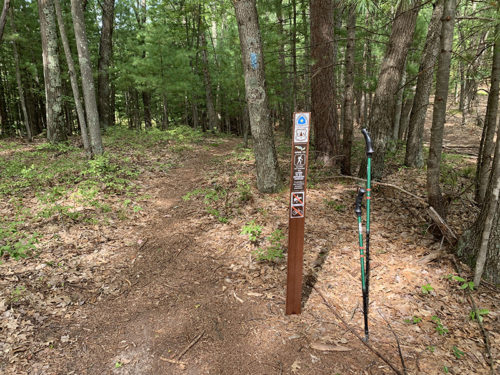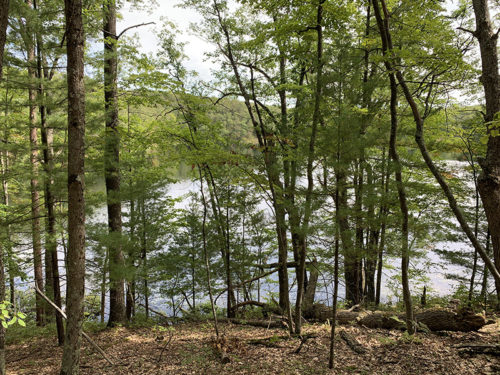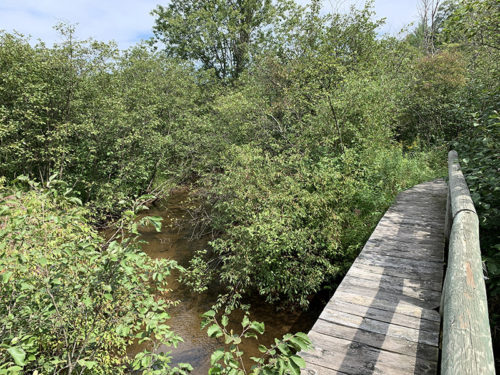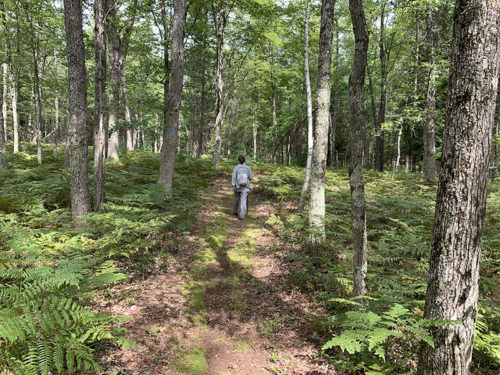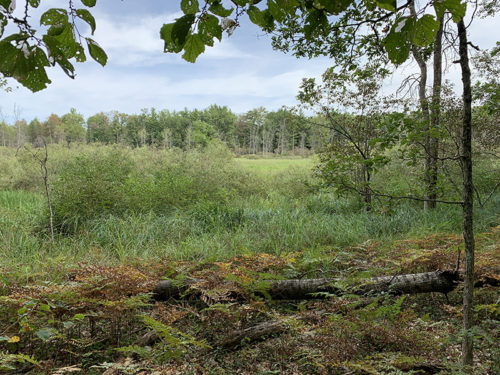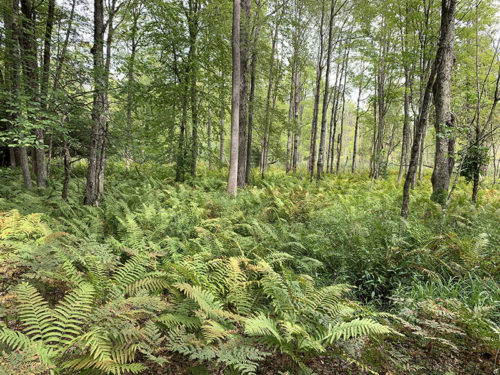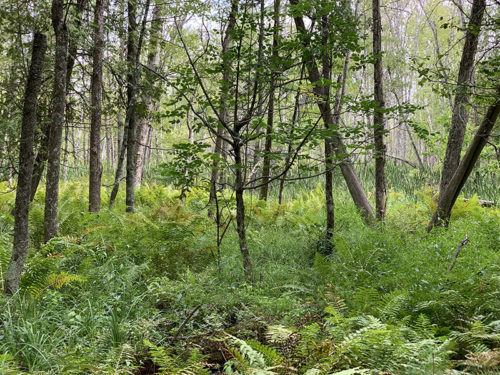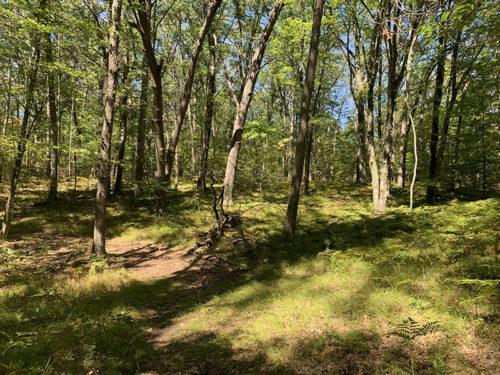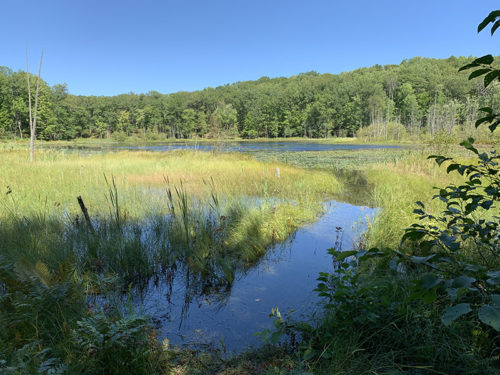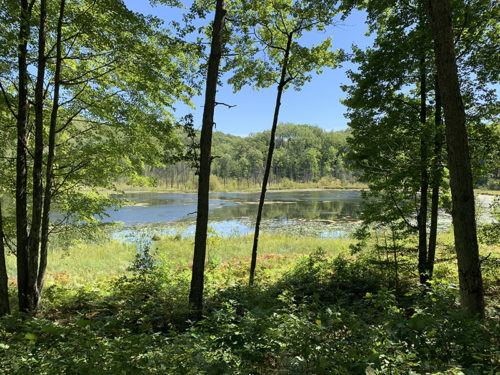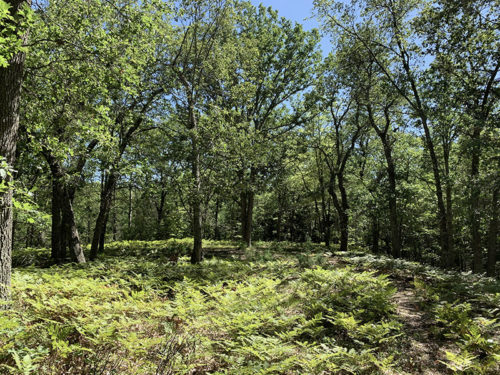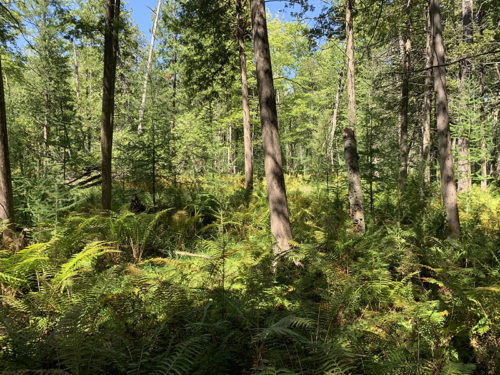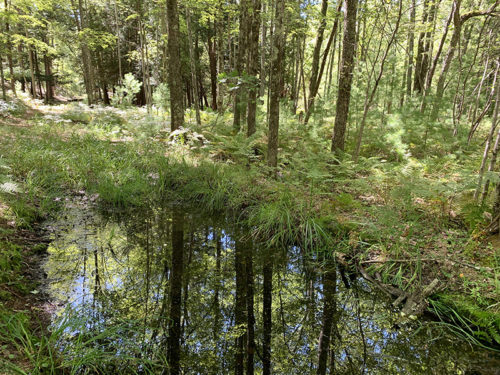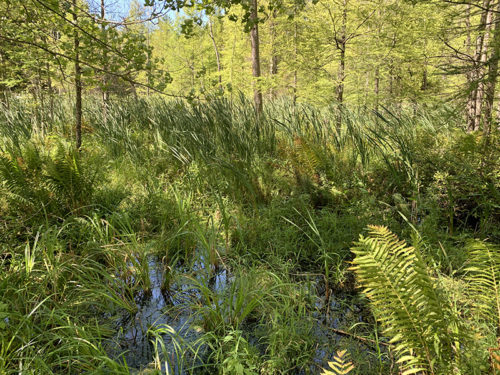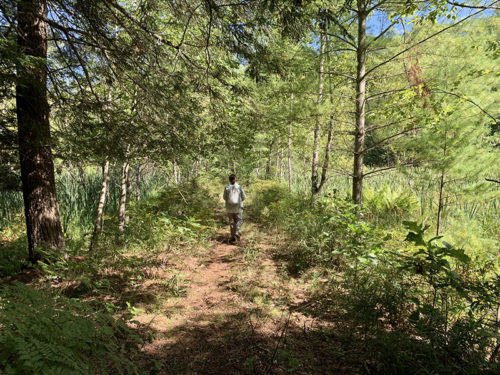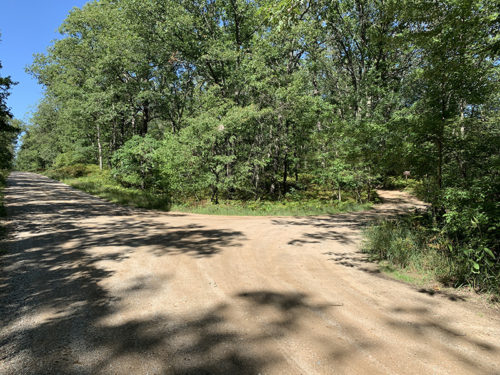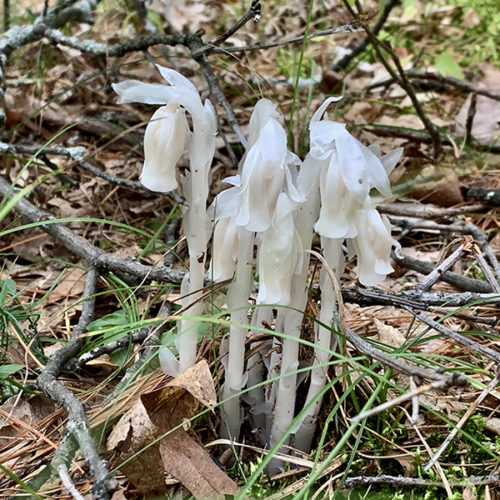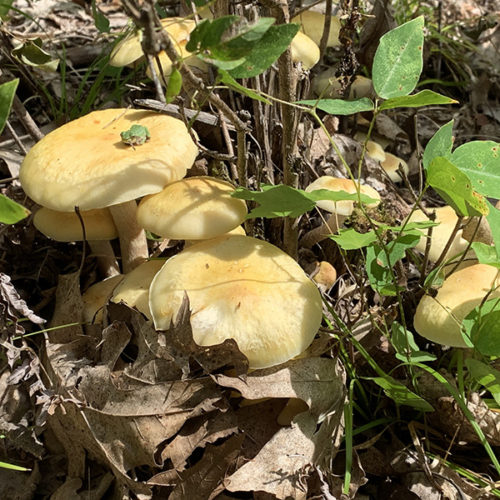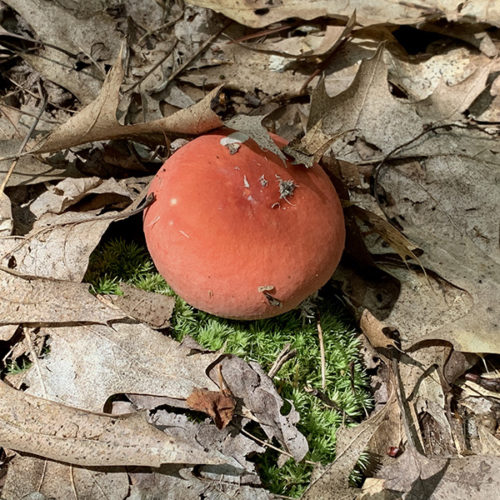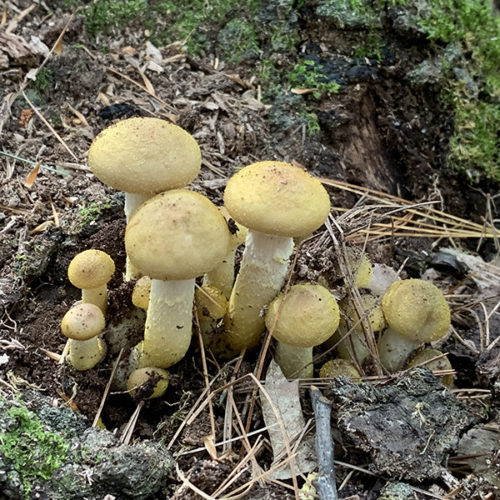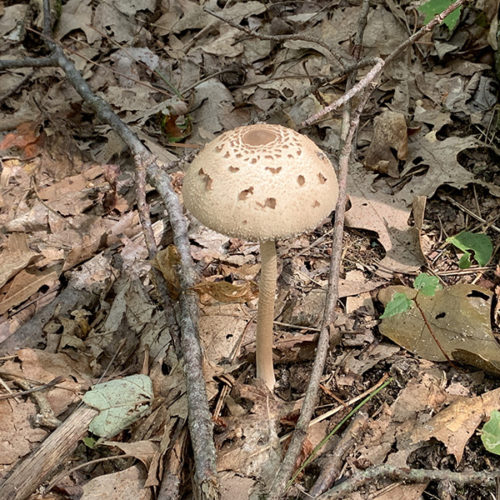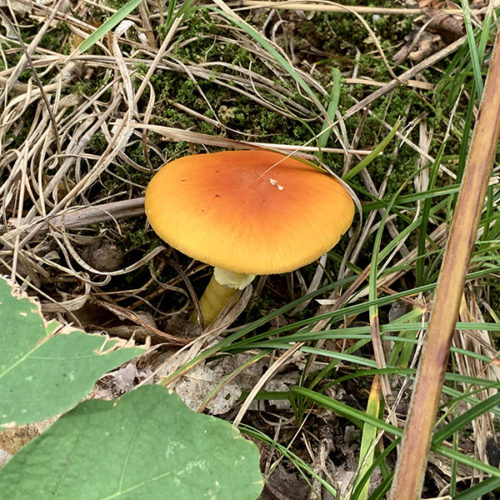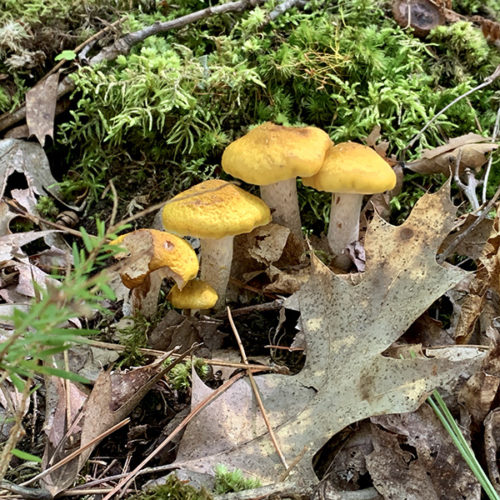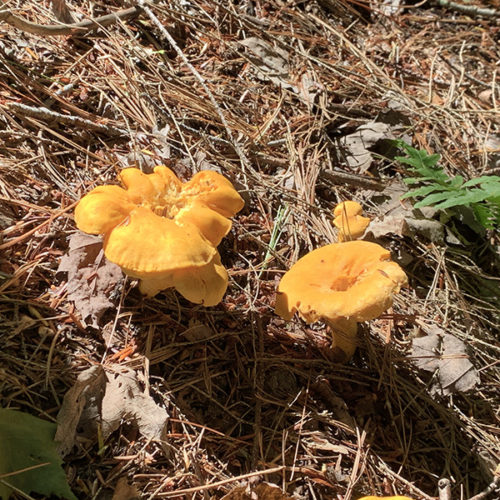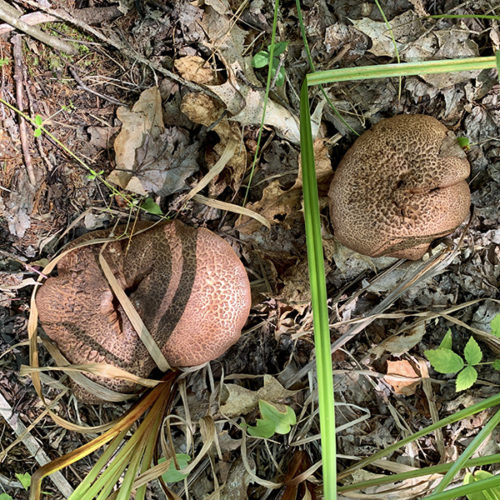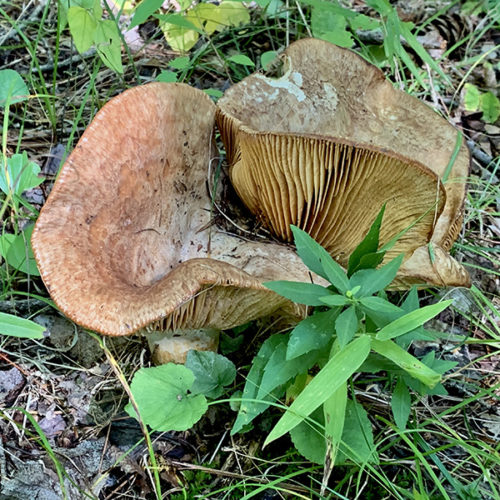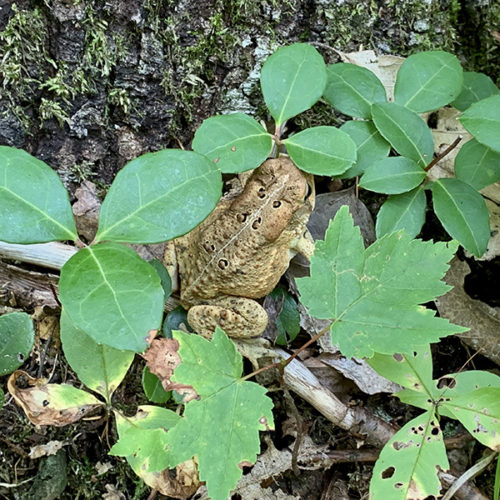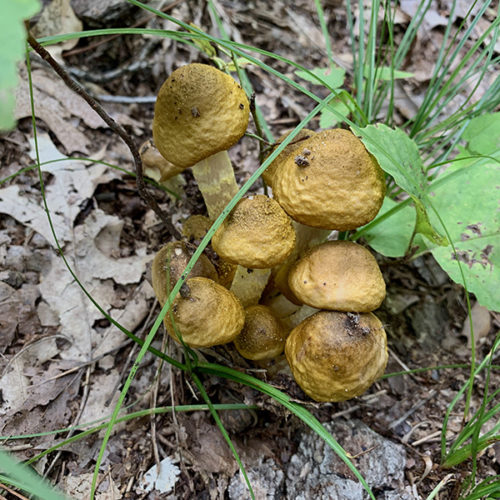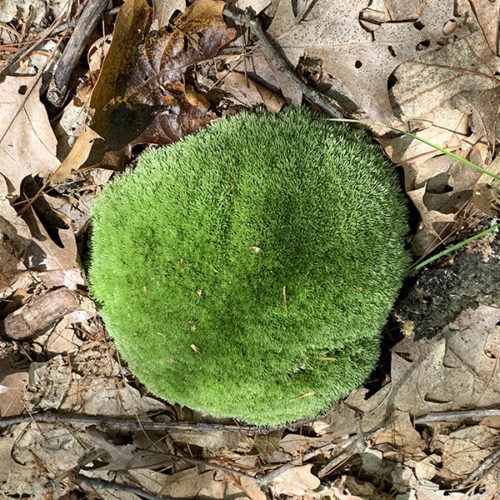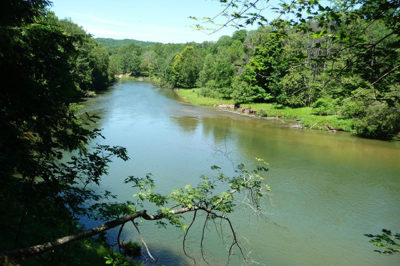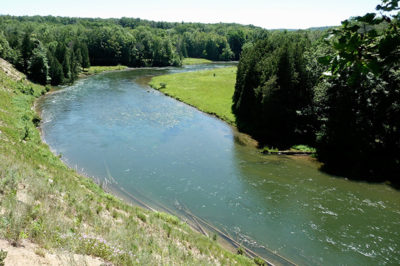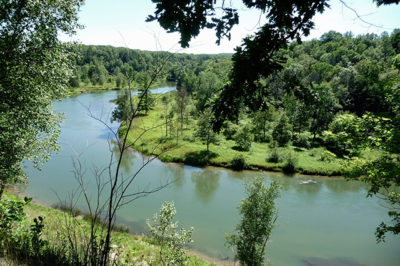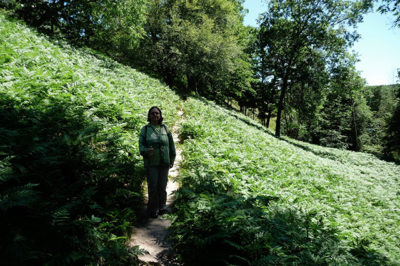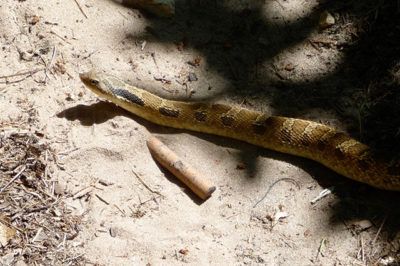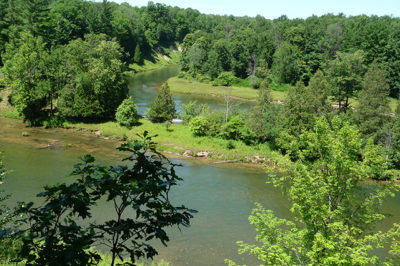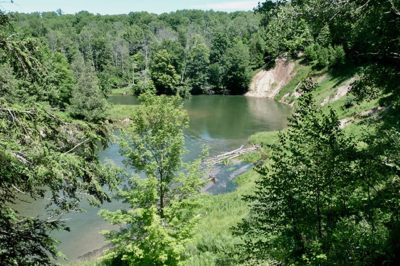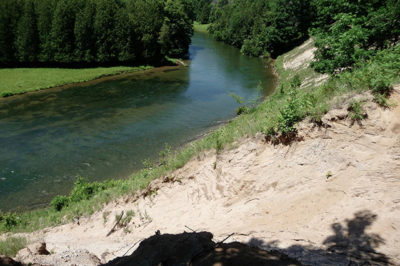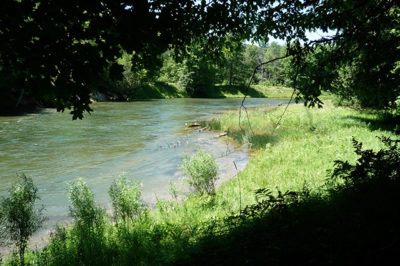We returned to Manistee Forest sooner than anticipated three weeks earlier when we were ☞ Camping in Manistee Forest. This time we went straight to Kenosha Lake to set camp on high bank of the lake. We could choose from 6 sites, no other campers and just two hikers in three and a half days. We cooked dinner, enjoyed lake view at sunset, observed osprey fishing, relaxed at camp fire and ended the day with some star gazing. When looking at stars at the lake edge, we heard a beaver slapping its tail to warn the rest of the family. At night we heard coyotes, one night quite close to our camp.
Next day was a longer hike on North Country National Scenic Trail (NCT). We drove a short distance (via Alger Av, Osborn Av, 96th St) to trail parking off Jenks Rd and started walking north towards Pere Marquette River. Nice sector along Jenks Creek, passing some marshes, crossing forest (some of it private and fenced). We stopped for lunch with nice view of the river, talked to an angler fishing for king salmon and continued walking on the trail along the river for a while. At some point we turned back and when walking along private section saw a big porcupine on trail ahead of us! It was not afraid and after a while disappeared in the forest. We walked-by our parked car and continued to Sterling Marsh, walked 11 of 13 boardwalks crossing the wetlands, almost to the point where we made it to from south three weeks earlier. We returned to the parking lot and drove to our campsite (this time via M37 and Bitely). We hiked 20.5 km that day.
 NCT north to Pere Marquette River
NCT north to Pere Marquette River
Click on wikiloc logo to see more details
The following two days we decided to explore local forest roads and trails: NE and W of Kenosha Lake. The highlight of the next day was walking around marsh with dense green vegetation near W Roosevelt Rd . We tried to walk to somewhere near intersection of Alger Av and W 16 Mile Rd, but extension of Roosevelt Rd (alt Alger Av) was overgrown and probably not easily passable. We crossed 16 Mile Rd to NFS 5395 and tried to get to the intersection from the other side, but forest road we picked was closed at some point (private property). We ended walking a bit on 16 Mile Rd (gravel, no cars) and picked NCT at the intersection. We returned to our camp following the trail, we already knew this section, but could not find appealing alternatives and time for camp fire and dinner was approaching. We hiked 13.7 km. We had just enough time to try our inflatable kayak for the first time. That evening we saw a beaver swimming across the lake and heard them at night working. Great view of Kenosha Lake from our camp.
 Northeast of Kenosha Lake
Northeast of Kenosha Lake
Click on wikiloc logo to see more details
Kenosha Lake
Our last hike was towards Otterman Lake and Cedar Creek. But first we spent an hour on our kayak, the views from water were very nice as the forest around the lake was turning red/orange/yellow. Piotr modified our new canopy, made it shorter so it fits in our car better and over our tents, it worked out well. We started hiking by crossing Kenosha Lake outlet (same way as the day before) and after a short detour walked west on NFS 5260. We walked pass the lake/marsh to the point where vegetation got too dense and we had to turn back. There was no easy way to cross the creek or get a good open view of the terrain. So we decided to try going around on the other side of the lake. Started on forest road, then trail, then “perhaps trail” and made a small loop in the forest looking for an interesting way out. The forest was easy to cross without trail as long as we stayed clear of the wetland areas (would be a different story after heavy rain). On the way back we made a side loop to explore fields of ferns (all brown already) and nice meadows. Contemplated for a moment making a wild shortcut to Kenosha Lake access road, but we had enough rough hiking for the day and terrain ahead looked marshy. We hiked only 10.8 km. Finished packing and headed home.
 West of Kenosha Lake
West of Kenosha Lake
Click on wikiloc logo to see more details
We looked around and on the ground…
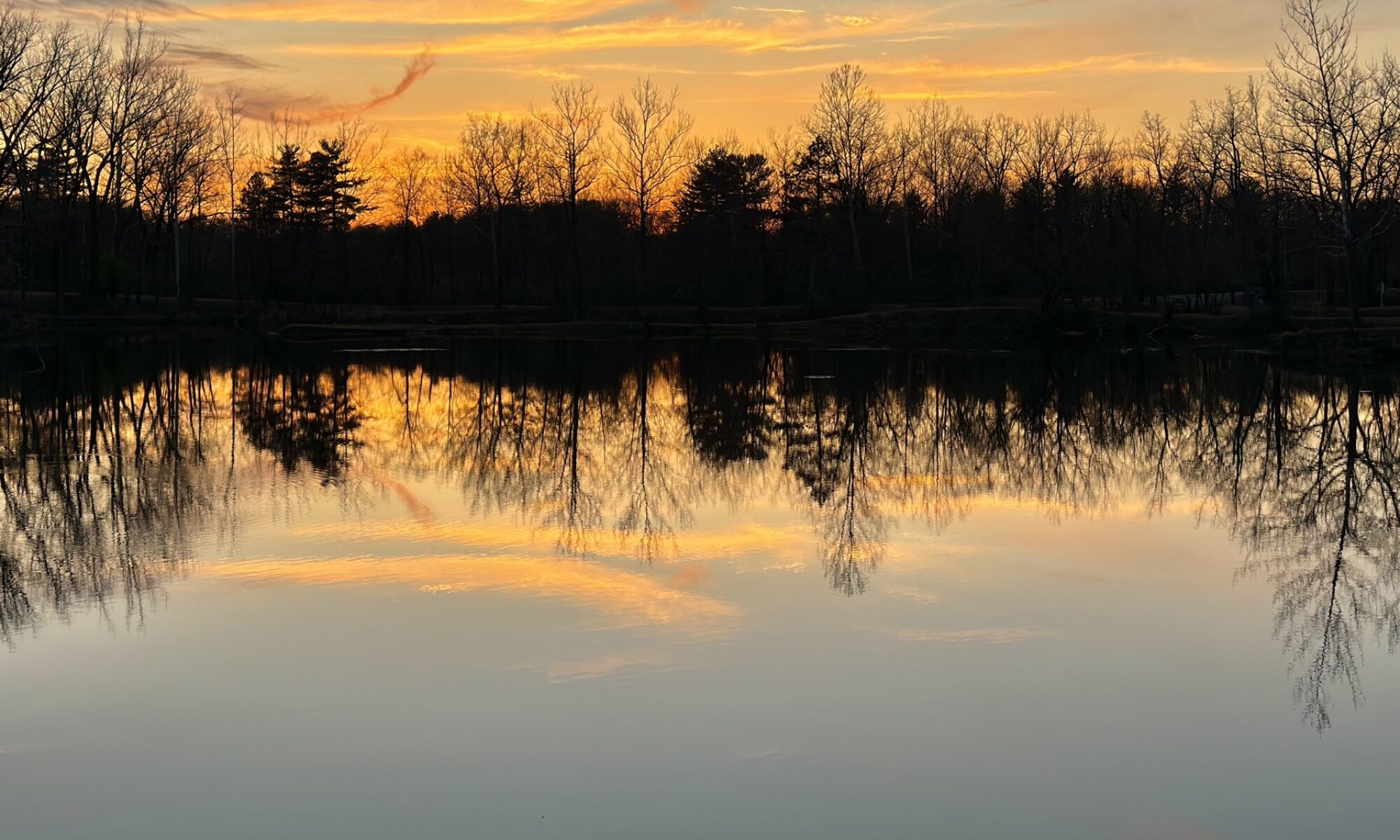
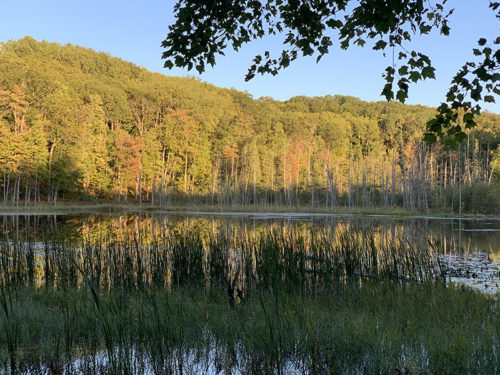
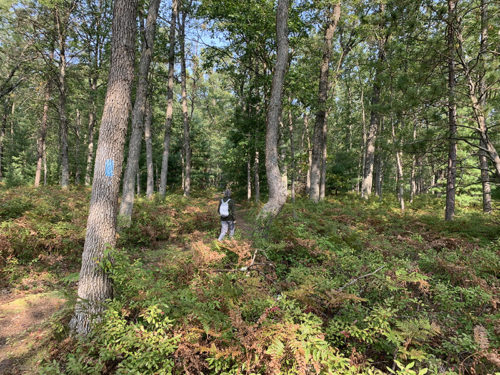
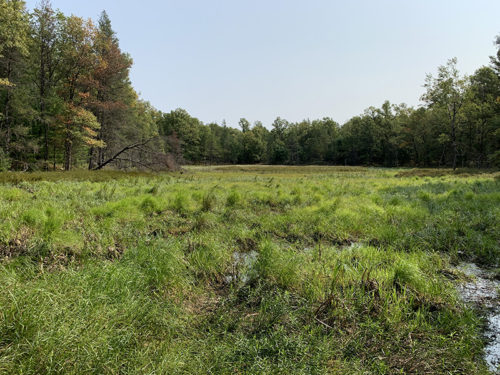
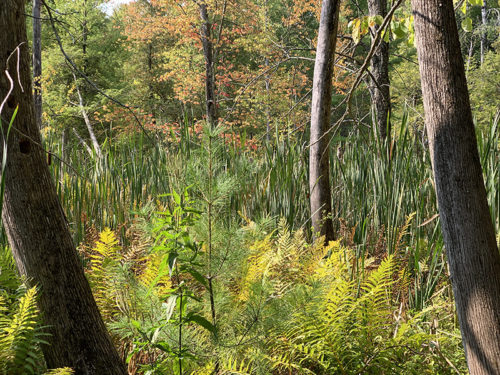
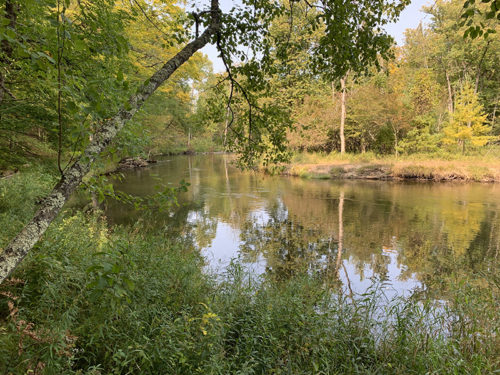
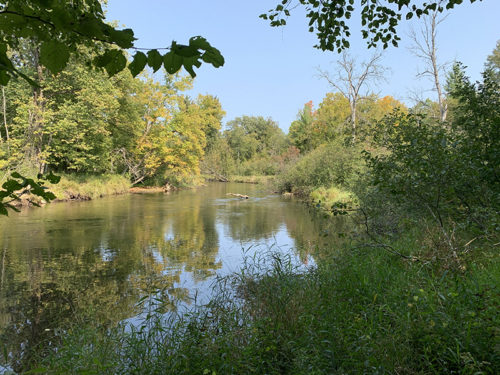
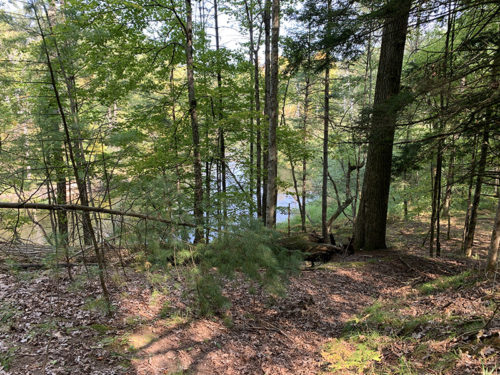
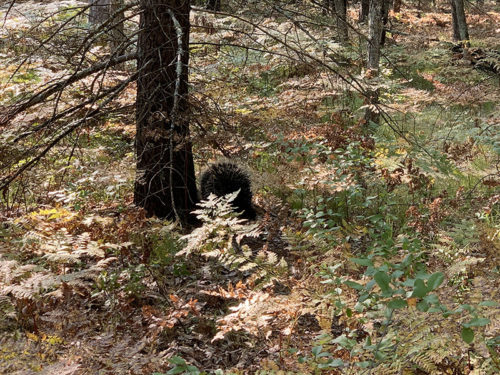
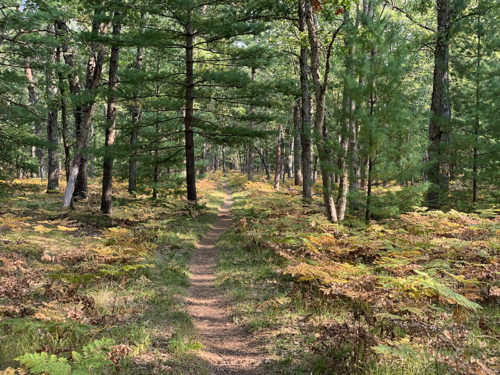
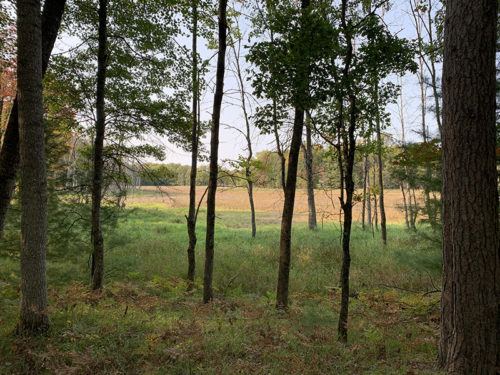
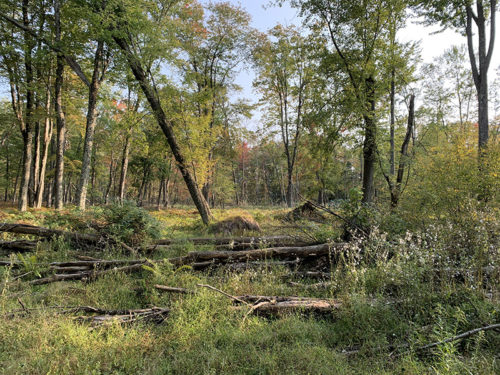
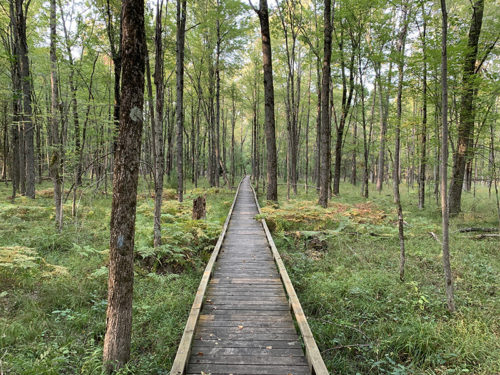
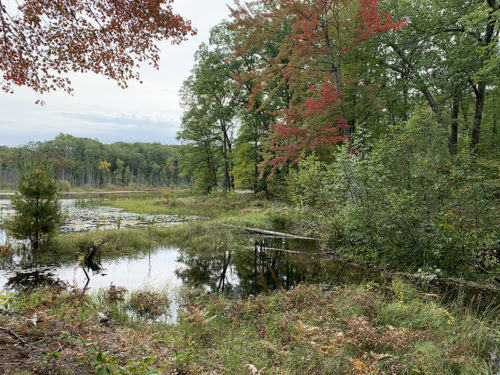
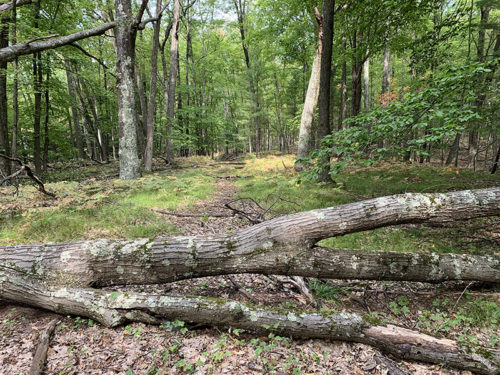
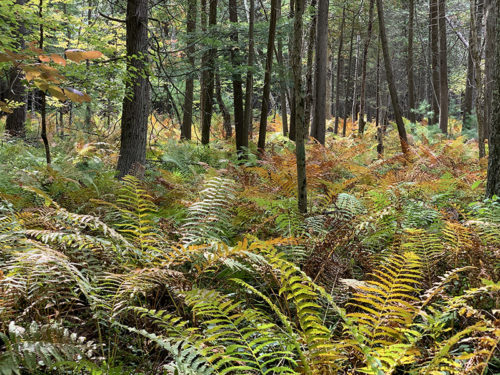
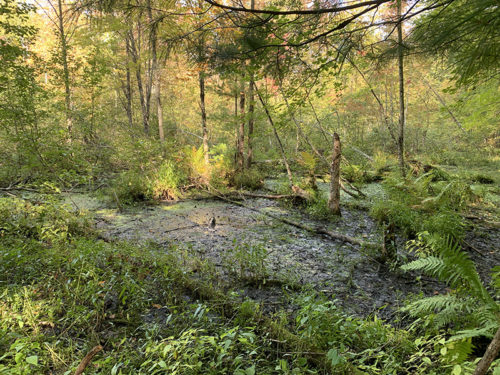
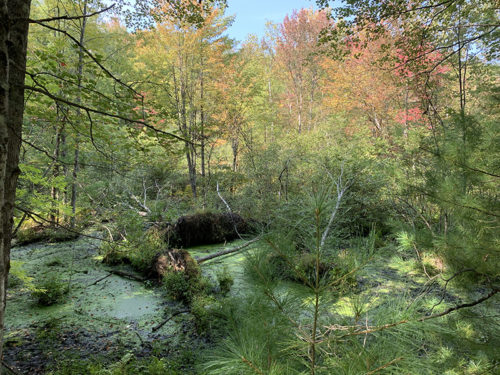
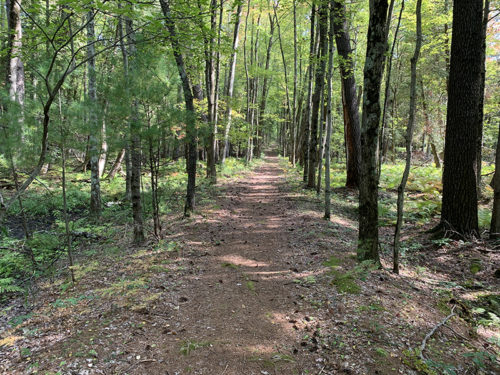
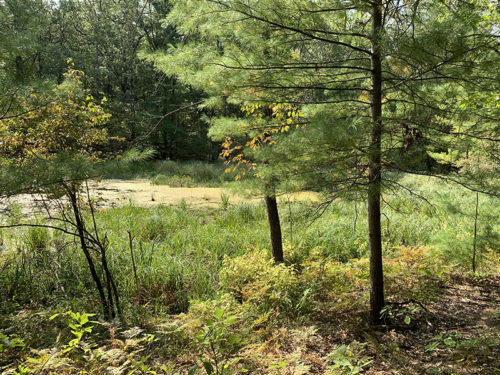
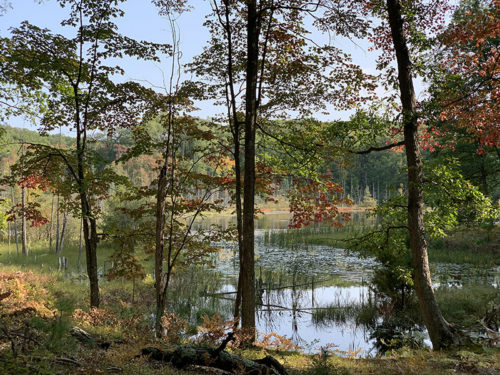
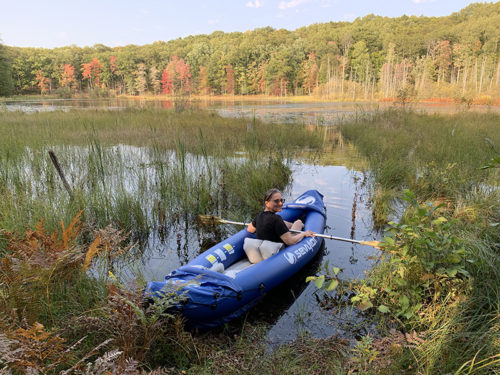
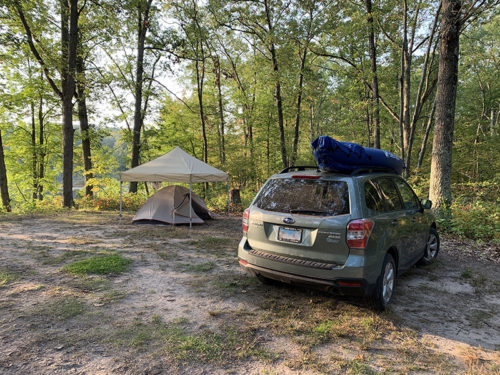
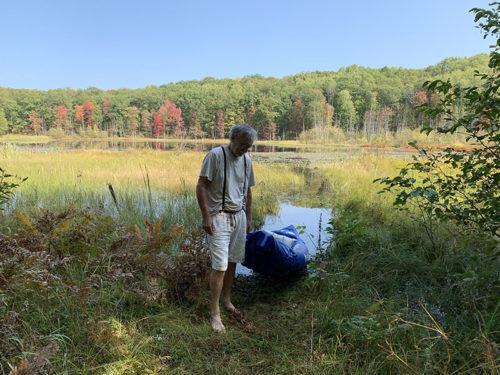
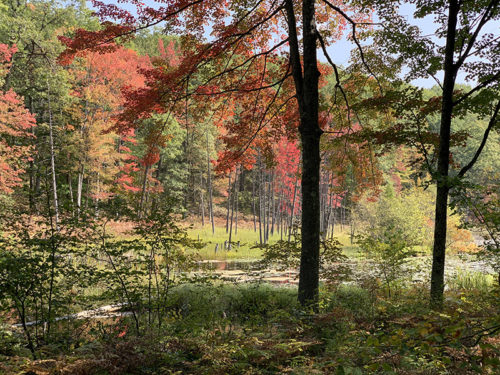
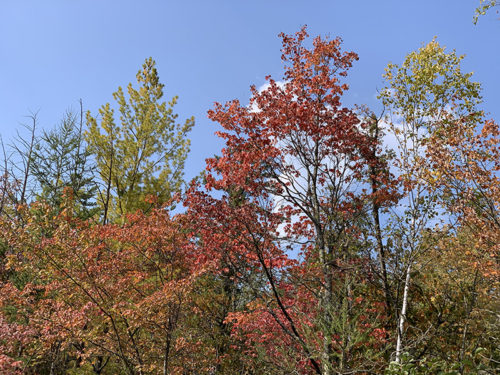
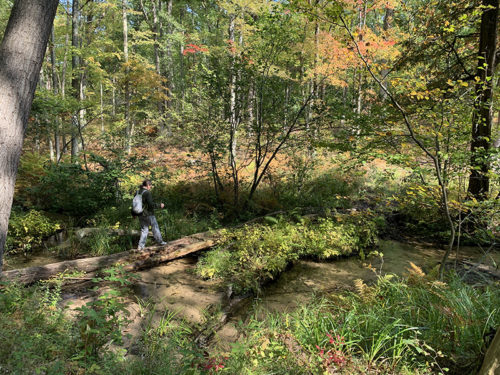
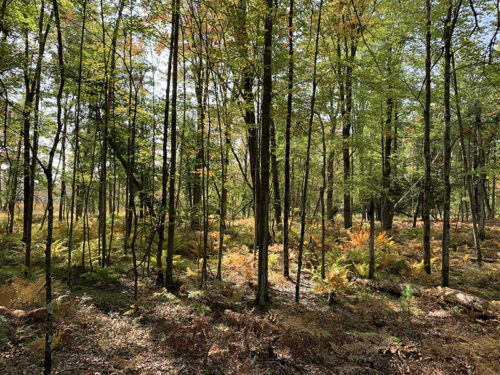
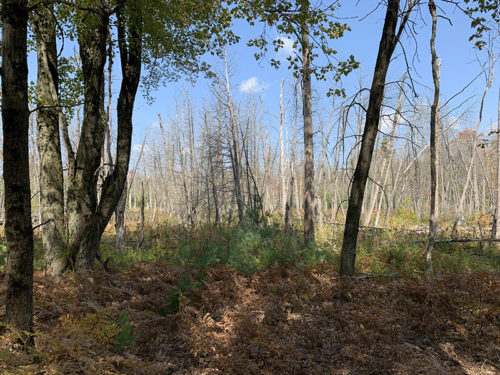
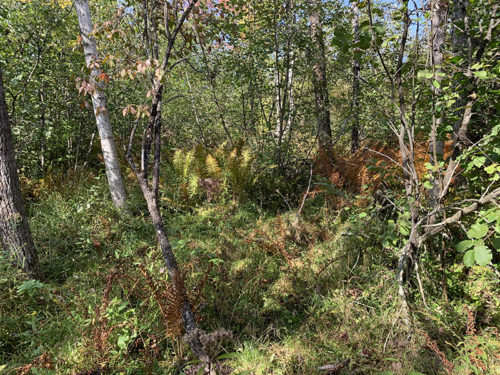
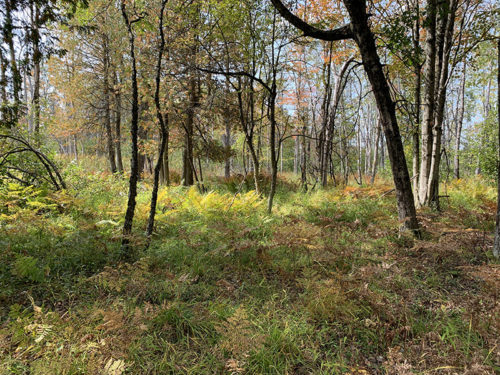
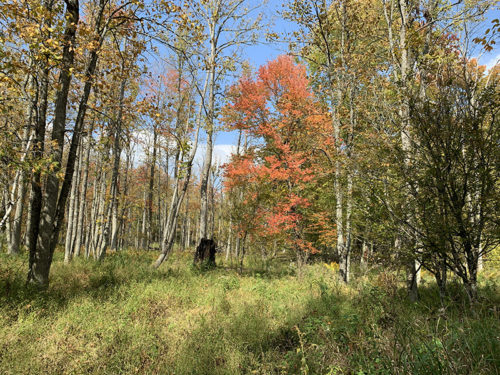
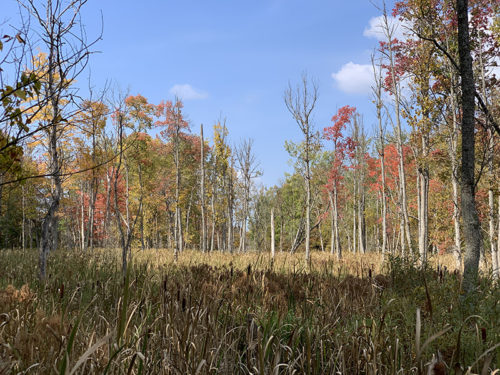
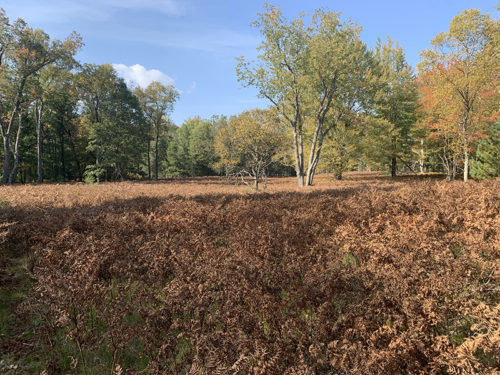
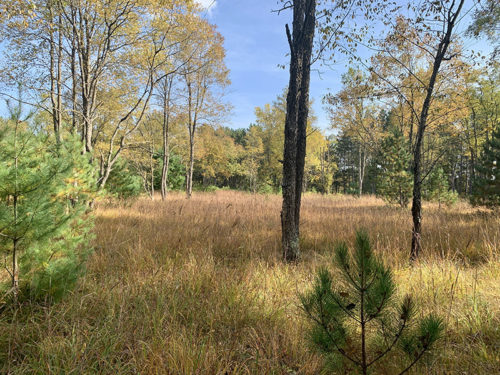
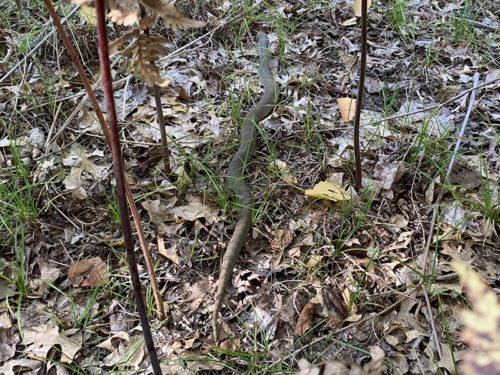
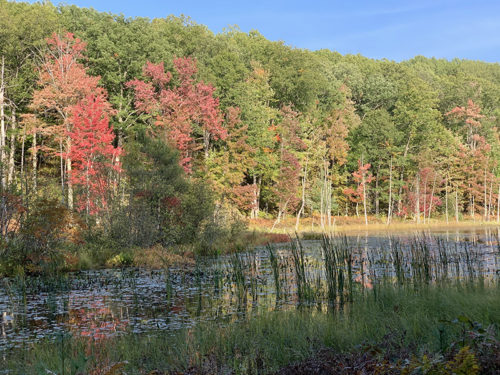
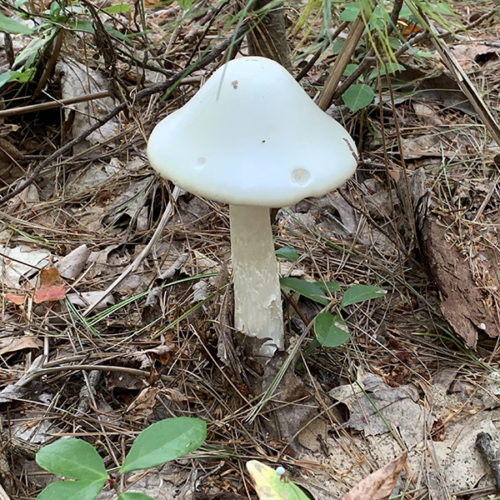
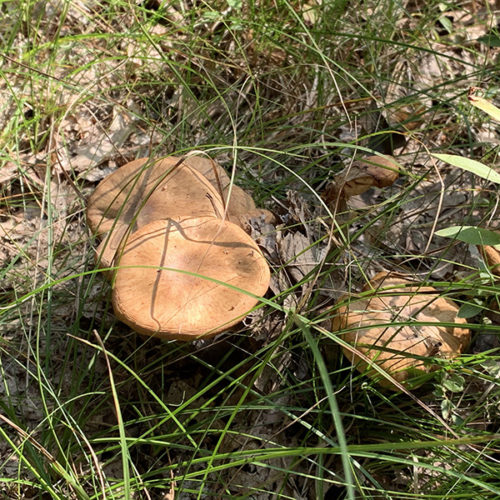
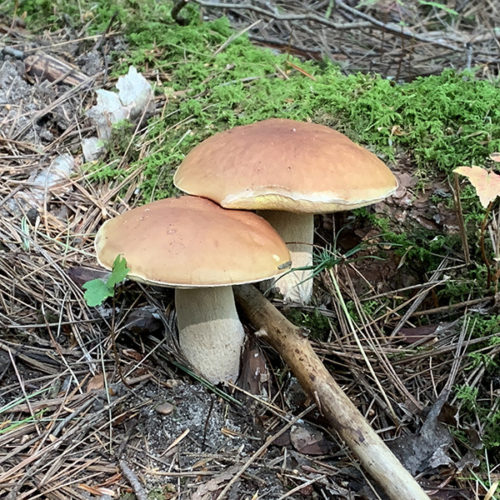
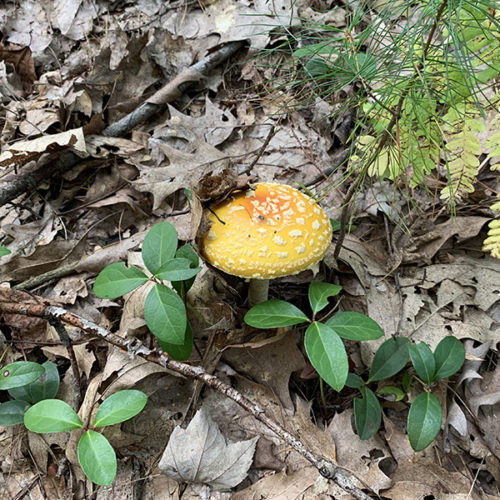
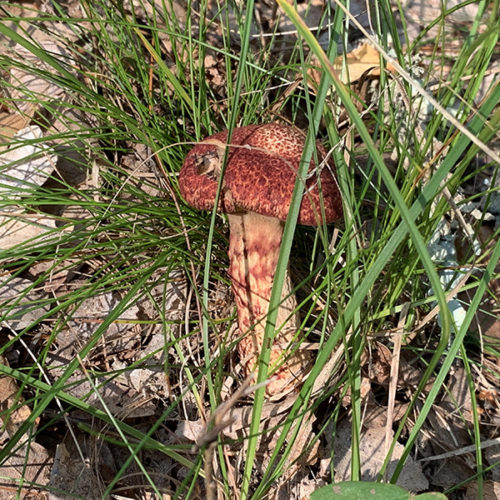
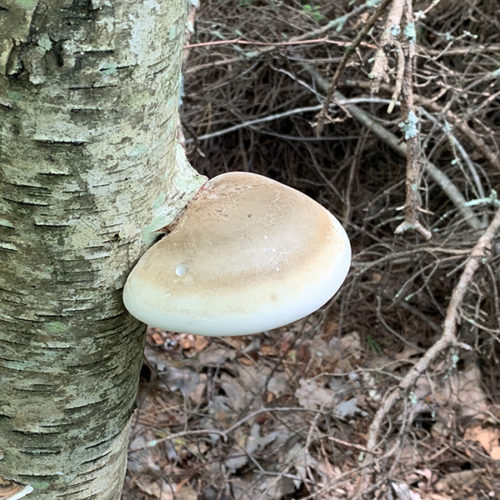
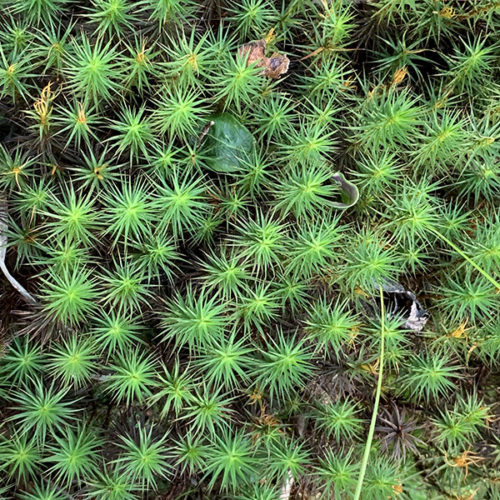
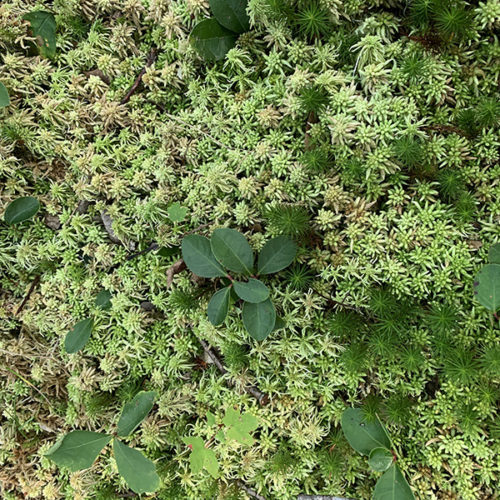
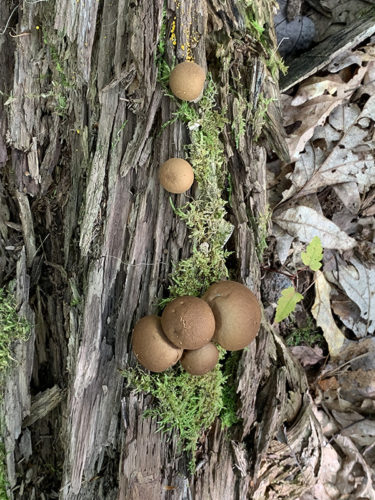
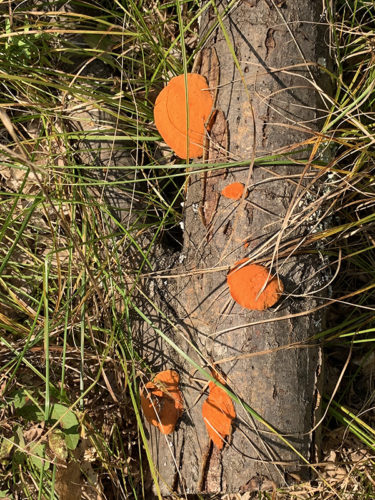
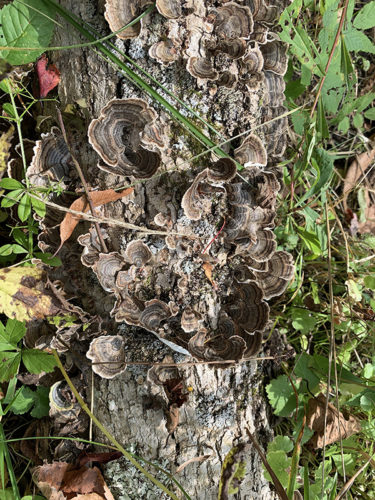
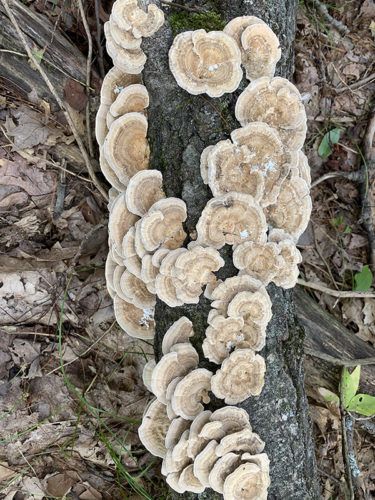
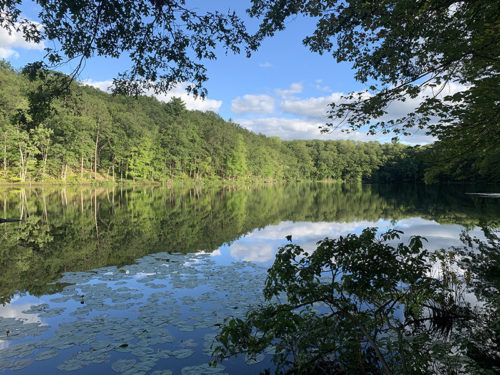
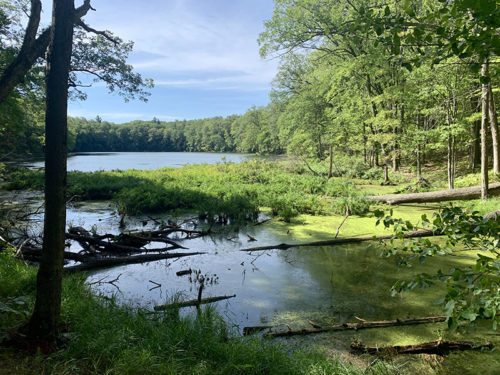
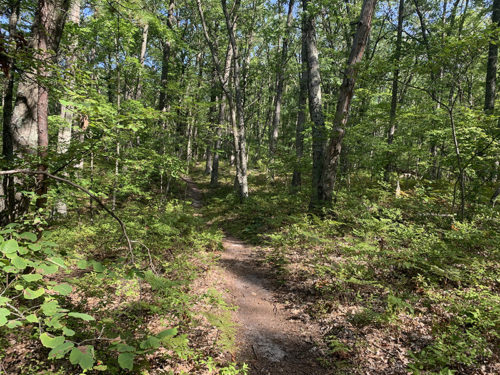
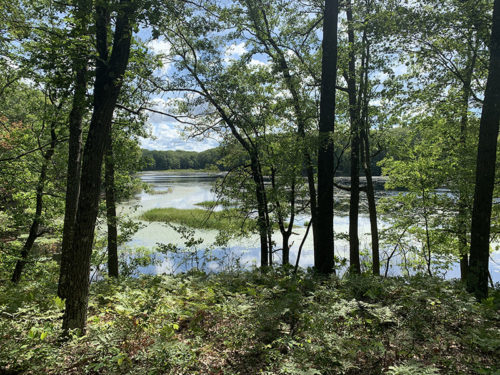
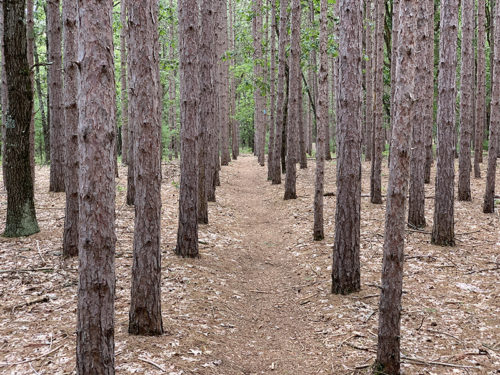

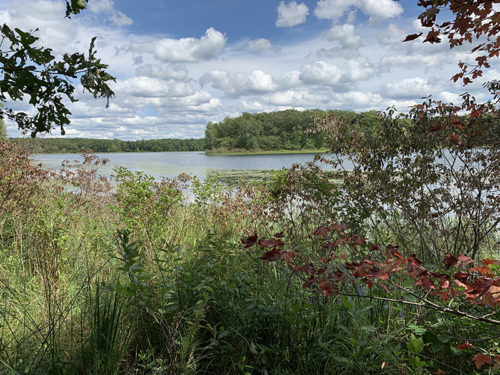
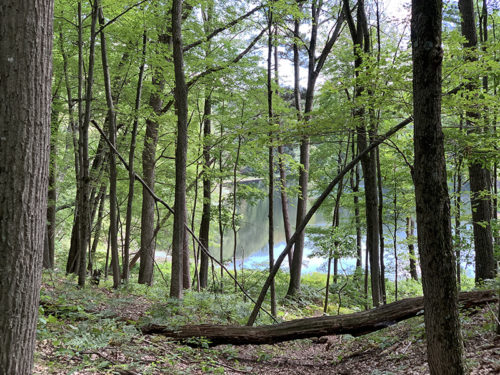
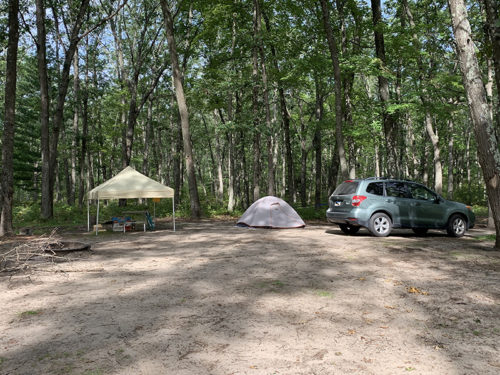
 NCT from Condon Lake to 96th St
NCT from Condon Lake to 96th St